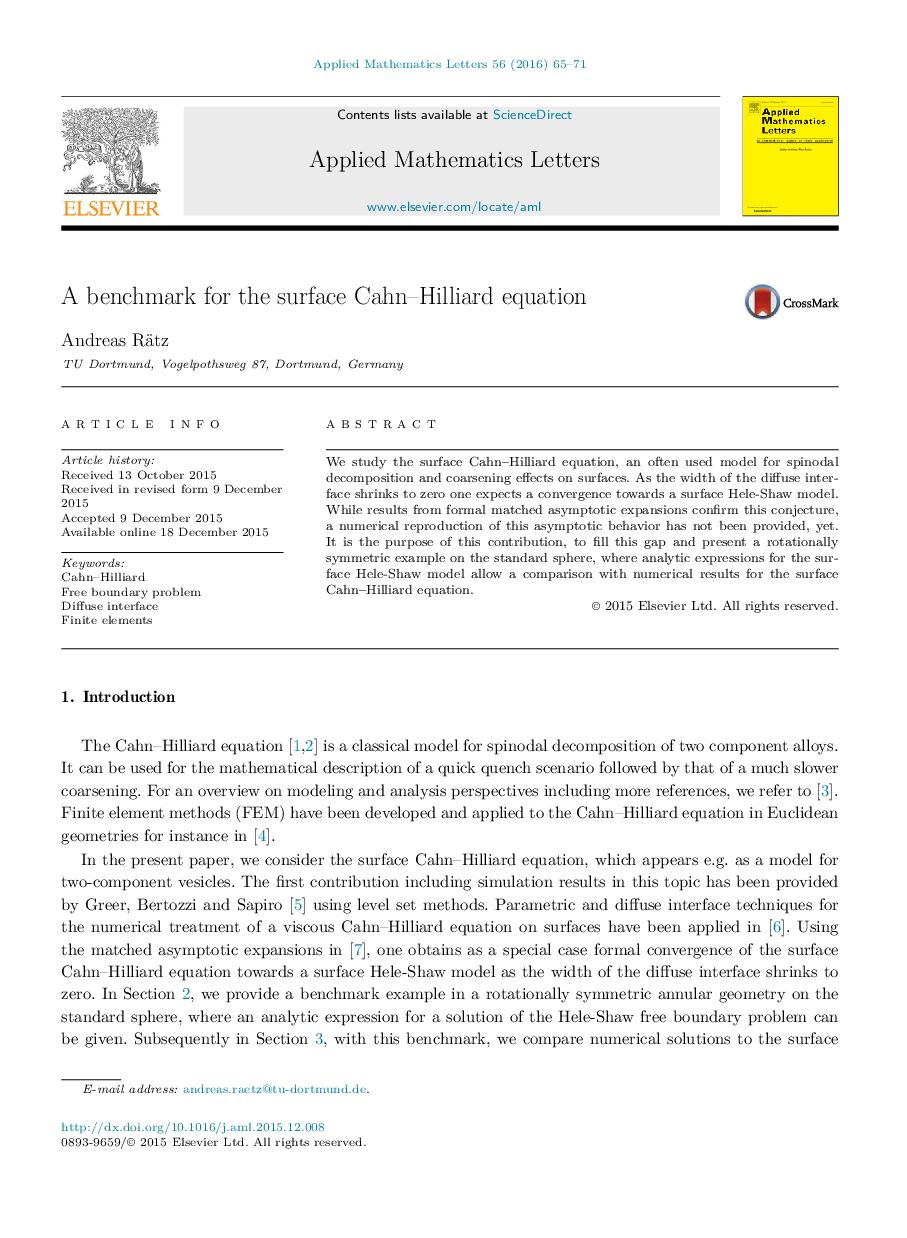| Article ID | Journal | Published Year | Pages | File Type |
|---|---|---|---|---|
| 1707590 | Applied Mathematics Letters | 2016 | 7 Pages |
Abstract
We study the surface Cahn–Hilliard equation, an often used model for spinodal decomposition and coarsening effects on surfaces. As the width of the diffuse interface shrinks to zero one expects a convergence towards a surface Hele-Shaw model. While results from formal matched asymptotic expansions confirm this conjecture, a numerical reproduction of this asymptotic behavior has not been provided, yet. It is the purpose of this contribution, to fill this gap and present a rotationally symmetric example on the standard sphere, where analytic expressions for the surface Hele-Shaw model allow a comparison with numerical results for the surface Cahn–Hilliard equation.
Related Topics
Physical Sciences and Engineering
Engineering
Computational Mechanics
Authors
Andreas Rätz,
